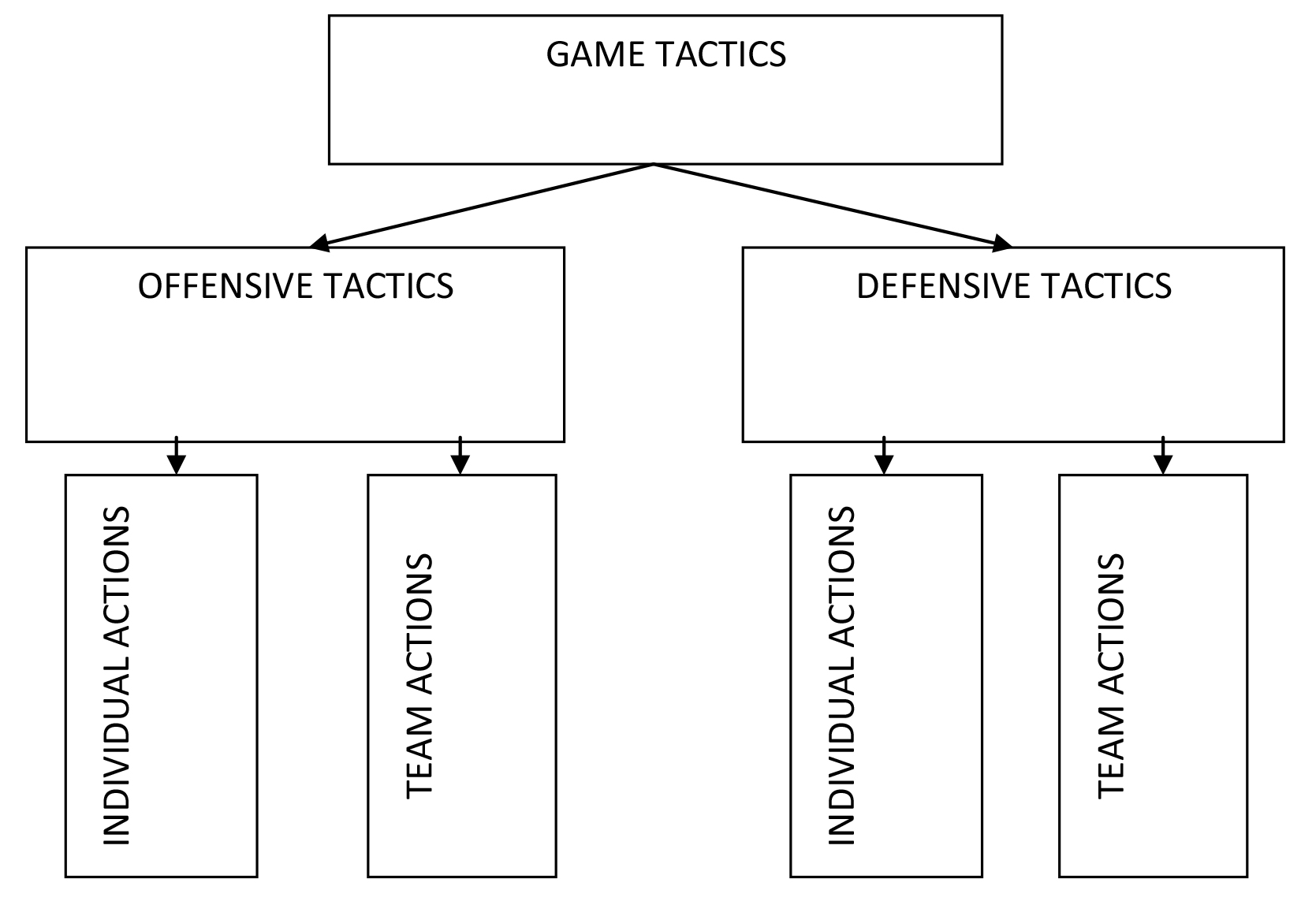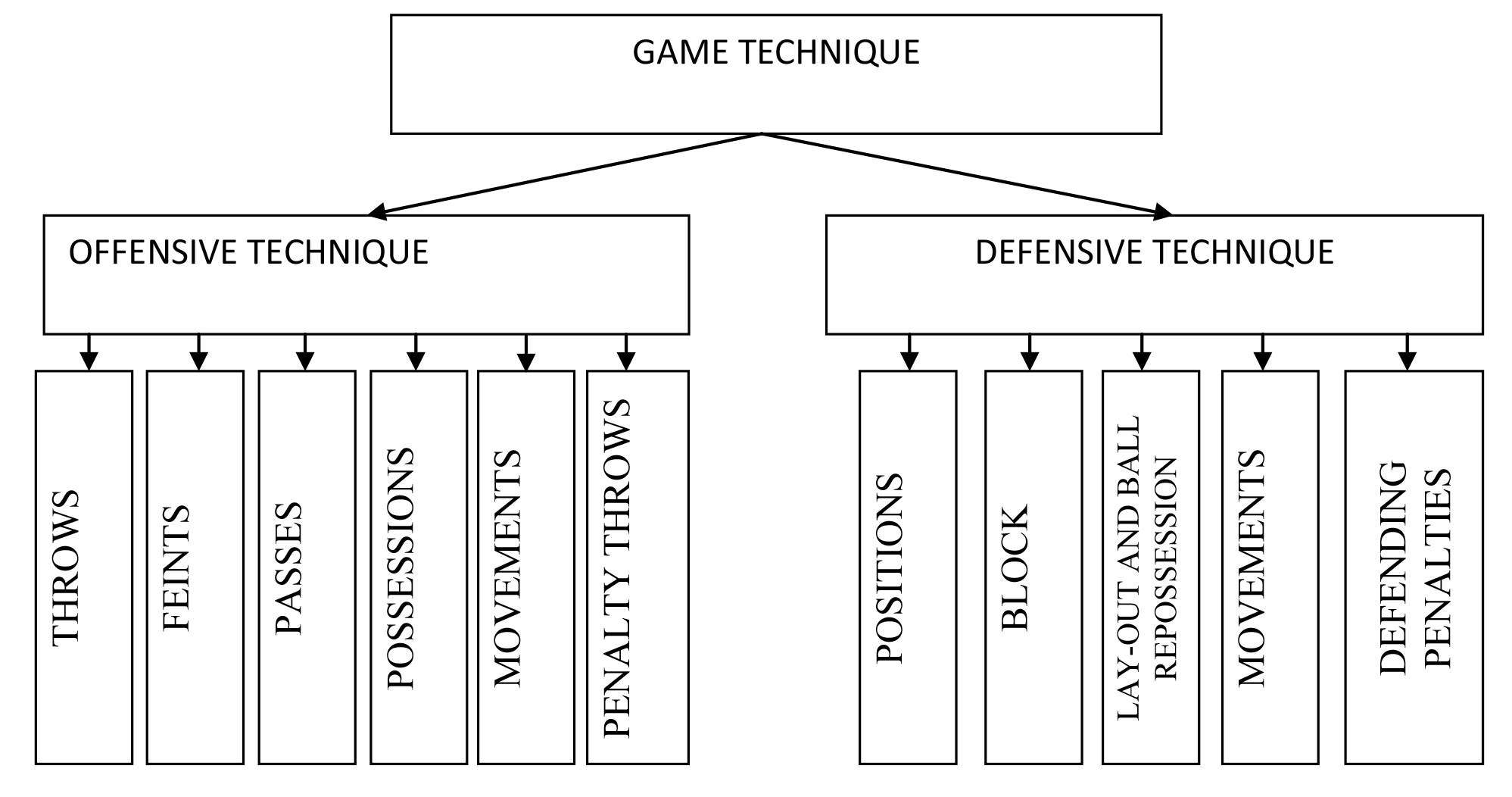Goalball game techniques and tactics
Фотографии:
ˑ:
PhD, Associate Professor A.V. Kornev
Dr. Hab., Professor M.A. Pravdov
Russian State Social University, Moscow
Keywords: game techniques, game tactics, goalball, adaptive sports.
Background. Presently modern goalball is clearly in need of systemic theoretical and practical provisions for the training and competitive processes that may be designed on the relatively broad practical training and competitive experience accumulated in the sport including the individualised technical skill and tactical team action mastering methods. Analyses of the modern goalball technique and tactics will be designed in the context of the urgent need for due theoretical and practical provisions for the training and competitive processes.
Modern team sport actions and players’ skills are highly versatile, individualised and difficult being largely driven by the game tactics and technique built up within certain frame conditions (including the rules of the game, equipment and outfits, refereeing service etc.) that are largely interrelated. A high priority is to be given to due technical and tactical training components for the players to be able to cope efficiently and successfully with every challenge in the competitive process.
Objective of the study was to perform a comprehensive analysis of the modern goalball techniques and tactics.
Methods and structure of the study. Tactical training in modern goalball implies every player and team on the whole being highly fit for and efficient in individual, group and team actions: see Figure 1. Individual actions are dominated by the ball handling and throwing skills. Group tactics implies the highly coordinated actions of two plus players; and the team tactics is referred to as the harmonic team interactions on the whole.

Figure 1. Basic classification of the goalball game tactics
Technical training process of the vision-deficient and blind athletes may be interpreted as the game techniques mastering process: see Figure 2. The higher is the technical performance of a goalball player the higher are his/her chances and opportunities for demonstration of a successful, creative and appealing game. Every highly-skilled and experienced goalball player tends to develop his/her own preferred and specific versions of the standard goalball technique that often make him/her special in the team.

Figure 2. Basic classification of the goalball game technique
Modern goalball techniques may be basically classified into the offensive and defensive ones (see Figure 2), the defensive actions including positions, blocks, lay-outs, ball repossessions, movements and defending penalties; and the offensive actions including the ball throws into the goal, passes and possessions, movements across the court and penalty throws.
Throws to the goal in the goalball game crown the team offence, with their success being dependent on how strong and accurate they are – since the purpose of the game is to score as many goals as possible. Throws comprise in fact the key offensive actions in the goalball game classified into running throws, standing throws, one- and two-hand, spinning, rotation throws etc.
Goroshnikov E.N. recommends the following throw technique mastering sequence: standing throws, one-, two-, three-stride throws, and spinning throws geared to bypass the defences. The throw mastering methods are to include a variety of exercises to train the relevant muscle groups of the upper limbs, stomach, trunk and lower limbs. It is widely believed that it is beneficial for the goalball team offensive actions to have at least one left-handed player since his/ her throwing techniques may be unusual, unexpected and awkward for the defending team.
Study results and discussion. Our analysis of the final games of the 2014 World Goalball Championship for blind and partially sighted athletes with a special emphasis on the gender-specific variations of the game techniques and tactics found the following model characteristics of some teams and individual players: see Tables 1 and 2.
The national teams of Brazil and Finland played in the men’s final, with the throwing techniques in the final being dominated by the leap throws that accounted for 62% of the total throws in the final, with the Brazil national team score of 75% and the Finland national team score of 50%. The central players in both of the teams carried most of the burden of the defence, whilst the side players dominated in the offensive actions. The central player of the Brazil team scored 14 throws (14.6%) into the goal (on average per game) versus his Finnish peer who made 24 offensive throws (24.5%). The Brazilian left-side player scored more offensive throws (51%) than his right-side teammate (34.4%), whilst the relevant side players’ scores in the Finland team were identical making up 37.8%. In terms of the offensive throw directions, the teams were scored as follows: straight throws accounted for 27% for Brazil and 23.5% for Finland; short diagonal throws scored 36.5% and 58.2%, respectively; and the long diagonal throws scored 36.5% and 18.3%, respectively. It should be noted that both of the teams clearly preferred the one-handed 360° rotation throws that amounted to 82.9% in total, with the Brazil team score in this offensive throw estimated at 93.8% versus the Finland team score of 72.4%.
One of the key tactical actions of the players were the offensive position changes by the players, with the Brazilians and Finns making resort to this action 14 times and 24 times per match, respectively, that is estimated at 14.6% and 24.5% of the total throws performed by the teams. It was the Brazil national team that won the final game defeating the Finland team with the score of 9:1.
Table 1. Technical and tactical action data of the men’s national teams of Brazil and Finland in the 2014 World Goalball Championship final
|
Actions |
Brazil |
Finland |
Total |
||||||
|
|
Time 1 |
Time 2 |
Total |
% |
Time 1 |
Time 2 |
Total |
% |
% |
|
Right-side player |
16 |
17 |
33 |
34,4 |
15 |
22 |
37 |
37,8 |
36,1 |
|
Central player |
6 |
8 |
14 |
14,6 |
14 |
10 |
24 |
24,5 |
19,6 |
|
Left-side player |
25 |
24 |
49 |
51 |
19 |
18 |
37 |
37,7 |
44,4 |
|
Low throws |
10 |
14 |
24 |
25 |
23 |
26 |
49 |
50 |
37,6 |
|
Leap throws |
37 |
35 |
72 |
75 |
25 |
24 |
49 |
50 |
62,4 |
|
Straight throws |
9 |
17 |
26 |
27 |
14 |
9 |
23 |
23,5 |
25,3 |
|
Short diagonal throws |
19 |
16 |
35 |
36,5 |
25 |
32 |
57 |
58,2 |
47,4 |
|
Long diagonal throws |
19 |
16 |
35 |
36,5 |
9 |
9 |
18 |
18,3 |
27,3 |
|
Standing throws |
2 |
2 |
4 |
4,1 |
1 |
0 |
1 |
1,1 |
2,6 |
|
Running throws |
1 |
1 |
2 |
2,1 |
16 |
10 |
26 |
26,5 |
14,5 |
|
Rotation throws |
44 |
46 |
90 |
93,8 |
31 |
40 |
71 |
72,4 |
82,9 |
The national teams of Russia and USA played in the women’s final. In contrast to the men’s teams, the women’s teams preferred low throws estimated at 72% of the total; with the US team score of 89.1% versus the Russia team score of 55% in this component. Central players of both of the teams gave the top priority to the defensive responsibilities whilst the side players mostly attacked, albeit the left-side player of the US team scored more than a half (52.7%) of the team total versus the Russia team score of 35.2% for the right-side player and 46.1% for the left-side one.
Table 2. Technical and tactical action data of the women’s national teams of USA and Russia in the 2014 World Goalball Championship final
|
Actions |
USA |
Russia |
Total |
|
|
% |
% |
% |
|
Right-side player |
24,2 |
46,2 |
35,2 |
|
Central player |
23,1 |
14,3 |
18,7 |
|
Left-side player |
52,7 |
39,5 |
46,1 |
|
Low throws |
89,1 |
55 |
72 |
|
Leap throws |
10,9 |
45 |
28 |
|
Straight throws |
21,9 |
19,8 |
20,8 |
|
Short diagonal throws |
46,1 |
53,8 |
46,1 |
|
Long diagonal throws |
32 |
26,4 |
29,1 |
|
Standing throws |
1,1 |
0 |
0,6 |
|
Running throws |
95,6 |
100 |
97,8 |
|
Rotation throws |
3,3 |
0 |
1,6 |
In terms of the offensive throw directions, the teams scored as follows: straight throws accounted for 21.9% for the US and 19.8% for Russia; short diagonal throws scored 46.1% and 53.8%, respectively; and the long diagonal throws scored 32% and 26.4%, respectively. It should be noted that, in contrast to the men’s teams, both of the women’s teams clearly preferred the one-handed running throws that amounted to 97.8% in total; with the US team score in this offensive throw estimated at 95.6% versus the Russian team score of 100%.
Conclusion. The study data and analyses give grounds for conclusions on the gender-specific techniques and tactics in the elite world goalball sport. Men players were found to give preference to the one-handed 360° rotation throws and women to the low one-handed running throws. The central players were found to dominate in the defensive tactics being focused on the goal defences. Furthermore, both the men’s and women’s teams were found to give preference to the short diagonal throws versus the straight and long diagonal throws. It should be also noted that the individual players’ techniques are presently quite versatile and specific, including alternative throw techniques that are occasionally used in offensive actions. One of the Finnish players, for instance, made two one-handed 720° rotation throws per match. Although such unusual offensive techniques are still seldom used in the top-ranking games, they are still highly welcomed by the spectators at competitions. The study data and analyses generated statistics of the preferred women and men’s goalball throw techniques that may be supported by the relevant biomechanical analyses. It should be noted that the elite goalball players are highly individual in their technical skills and, hence, the study data may be applied to design the technique execution models applicable by coaches in the goalball basics mastering courses.
References
- Goroshnikov E.N., Ivanov M.M. Sportivnye igry dlya nezryachikh. Metodicheskoe posobie [Sports games for the blind. Teaching aid]. Moscow: VOS publ., 1988, 56 p.
Corresponding author: av-kornev@mail.ru
Abstract
The article offers a comprehensive analysis of the modern goalball techniques and tactics based on the understanding that due theoretical and practical provisions need to be put in place for the education, training and competitive processes in the sport disciplines of the Winter and Summer Paralympic Game programs, with the team sports for blind and vision-deficient athletes (including goalball and B1 football) being no exclusion. Analyses of the modern goalball techniques and tactics should be designed in the context of the urgent need for due theoretical and practical provisions for the training and competitive processes in the relevant team sport disciplines.
Modern team sport actions and players’ skills are highly versatile, individualised and difficult for mastering being largely driven by the game tactics and techniques that evolve within certain frame conditions (including the rules of the game, equipment and outfits, refereeing service etc.) that are largely interrelated.
Tactical training in modern goalball implies every player and team on the whole being highly fit for and efficient in the individual, group and team actions. Individual actions are dominated by the ball handling and throwing skills. Group tactics imply the highly coordinated actions of two plus players; and the team tactics are referred to as the harmonic team interactions on the whole.
Technical training process of the vision-deficient and blind athletes is interpreted as the game techniques mastering process. The higher is the technical performance of a goalball player the higher are his/her chances and opportunities for demonstration of a successful, creative and appealing game.
The article offers an analysis of the final games of the 2014 World Goalball Championship for blind and partially sighted athletes with a special emphasis on the gender-specific variations of the practical game techniques and tactics demonstrated by the top-ranking national teams plus the model performance characteristics of some teams and individual players.



